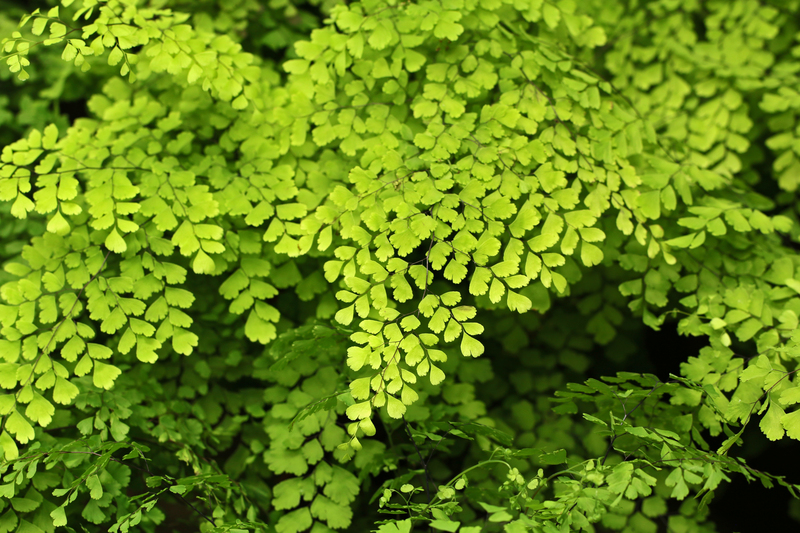Master the Art of Weed Control: 3 Expert Tips
Posted on 04/06/2025
Master the Art of Weed Control: 3 Expert Tips
Weeds are the unwelcome guests in every gardener's paradise. They rob your plants of vital nutrients, consume water, block sunlight, and can even spread diseases. If you want your garden to flourish, mastering the art of weed control is essential. In this comprehensive guide, we'll walk you through three expert tips for effective weed management. By the end, you'll have the knowledge and confidence to keep your garden healthy, vibrant, and virtually weed-free.

Why Is Effective Weed Control So Important?
Weeds aren't just an aesthetic nuisance. They compete directly with your cherished plants for resources. Unmanaged, they can quickly overrun a garden, leading to diminished crop yields, stressed ornamentals, and a constant uphill battle for the gardener. The secret to successful weed control lies in understanding weed behavior and applying strategic management techniques.
- Promotes healthy plant growth
- Improves soil quality
- Reduces disease and pest problems
- Increases garden aesthetics and productivity
1. Know Your Enemy: Weed Identification and Life Cycles
The first step to weed control mastery is correctly identifying the types of weeds infesting your garden. Not all weeds are created equal. Some are annuals that survive only one season, while others are perennials that keep coming back year after year. Knowing their life cycle reveals their vulnerabilities, helping you choose the most effective control methods.
Annual Weeds
Annual weeds--like crabgrass and chickweed--complete their life cycle in one growing season. These opportunists germinate, grow rapidly, flower, and set seed in a few months. Each weed can deposit thousands of seeds, setting the stage for recurring infestations. The key to controlling annual weeds is:
- Prevent Seed Germination: Early action, like shallow hoeing and mulching, can destroy seedlings before they gain a foothold.
- Remove Weeds Before Seeding: Consistently removing annual weeds before they "go to seed" stops their reproductive cycle in your garden.
Perennial Weeds
Perennial weeds--such as dandelions, bindweed, and Canada thistle--live for several years and grow back from established root systems. These are more stubborn and resilient than annuals.
- Dig Up Entire Root Systems: Removing only the visible parts will not suffice--any remaining root fragments can regrow.
- Use Targeted Herbicide Applications: For severe infestations, selectivity is key. Spot-treating or using organic herbicides can help control tough perennials without harming nearby plants.
Biennial Weeds
Less common but just as troublesome, biennial weeds like wild carrot and burdock live for two years, forming roots and leaves the first year and flowering the next. The control strategy mirrors that of perennials: catch them early, before they set seed.
Tip: Keep a garden journal or use a weed identification smartphone app to track the weed types and their development over the seasons for an informed approach to weed management.
2. Stop Weeds Before They Start: Preventive Weed Control
True weed control experts know that the easiest weed to manage is the one that never emerges in the first place. Adopting a preventive mindset and practicing integrated strategies can reduce weeding chores and dramatically improve your success.
Mulching: The Gardener's Secret Weapon
A thick layer of mulch blocks sunlight, smothering sprouting weed seeds and retaining soil moisture for your plants. Use organic materials like straw, shredded bark, compost, or leaves for a double benefit: weed suppression and soil enrichment.
- Apply mulch in spring, after the soil warms up and before annual weeds germinate.
- Maintain a 2-4 inch layer around plants, taking care not to pile it directly against stems or trunks.
In addition to weed prevention, mulch helps regulate temperatures, improves water retention, and feeds beneficial soil organisms.
Landscape Fabric and Barriers
For high-maintenance areas or around perennial borders, consider using landscape fabric topped with mulch or decorative gravel. This dual layer physically blocks weed emergence while allowing water and air movement.
- Cut holes only where plants will grow, minimizing exposed soil.
- Inspect yearly to repair tears and add fresh mulch as needed.
Cultural Practices
Gardening habits play a crucial role in weed prevention:
- Choose vigorous plant varieties that shade soil and outcompete weeds.
- Space plants appropriately to reduce open soil where weeds thrive.
- Rotate crops and use cover crops, especially in vegetable gardens, to disrupt weed life cycles and improve soil structure.
Pro Tip: Never leave bare soil exposed for long periods. Promptly plant cover crops, groundcovers, or mulch newly cleared areas.
3. Smart, Efficient Weed Removal: Techniques for Lasting Success
Even with excellent prevention, some weeds will break through. Efficient weed removal is about timing, technique, and persistence. The following expert strategies ensure weeds are dealt with quickly and don't return in force.
Hand Pulling and Hoeing
The oldest and often most effective method, manual removal is best after rain or watering, when the soil is moist, and roots slip out easily. Use a weeding tool or hoe for shallow-rooted weeds and diggers for deep-rooted perennials.
- Grip weeds at the base to minimize root breakage.
- Pull after rain or irrigation when soil is loose.
- Dispose of flowering or seeding weeds in trash--not the compost pile--to prevent further spreading.
Thermal and Organic Solutions
If you're aiming for chemical-free weed eradication, several eco-friendly options are available:
- Flame weeding: Passing a flame briefly over seedlings causes the weeds to wilt and die. Effective on driveways and paths.
- Boiling water: Pour directly onto weeds in cracks and non-planted areas for a quick kill.
- Homemade vinegar sprays: Use with caution on sunny days, avoiding desired plants.
*These methods are best for isolated weeds rather than large infestations.*
Selective Herbicides
There's a time and place for smart herbicide use--especially for tough, established perennials or large problem areas. Choose products that are targeted for specific weed types and always follow label instructions.
- Apply on calm, dry days to prevent drift onto desired plants.
- Spot treat rather than blanket spraying to minimize chemical use and environmental impact.
- Wear protective gloves and wash hands thoroughly after application.
Consistency is key: Weeding sessions every 1-2 weeks during the peak growing season keep your garden manageable and enjoyable.

Weed Control FAQs: Expert Answers
- Q: What is the most effective way to control weeds naturally?
A: Preventive methods like mulching, close plant spacing, and crop rotation, combined with regular hand removal, are highly effective and eco-friendly. - Q: When is the best time to remove weeds?
A: Early spring is ideal--removing weeds when they're small and before they flower dramatically reduces seed production and future problems. - Q: Can weeds be composted?
A: Only if they haven't gone to seed and your compost reaches sustained high temperatures to kill roots and shoots.
Conclusion: Achieving Weed-Free Perfection
Mastering weed control isn't about a one-time blitz--it's a season-long dance of prevention, vigilance, and smart removal. By understanding your weeds, implementing preventive strategies, and using effective removal techniques, you transform your gardening experience into one of ease and pride.
Remember, the best approach to weed management is consistent, multifaceted, and tailored to your garden's needs. Commit to these 3 expert weed control tips, and you'll enjoy a lush, healthy, and low-maintenance haven all season long.
Start mastering the art of weed control today--and watch your garden thrive like never before!



